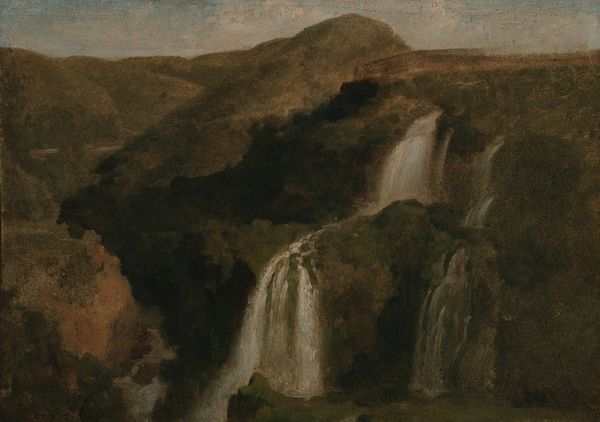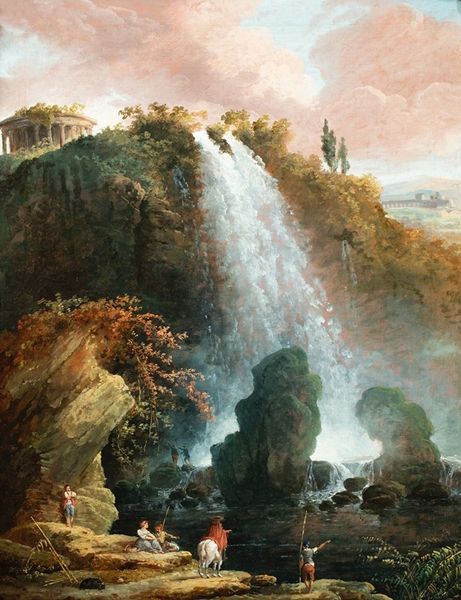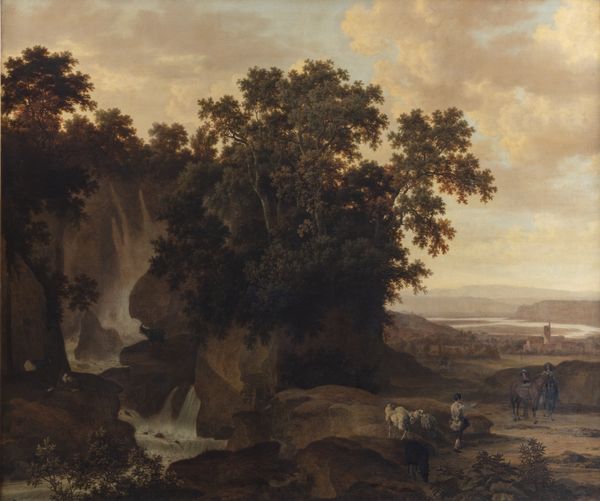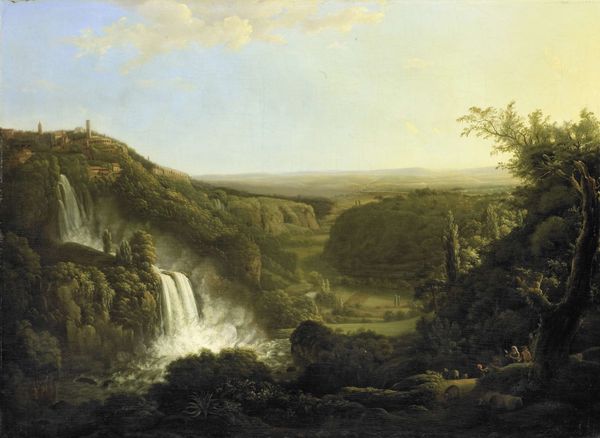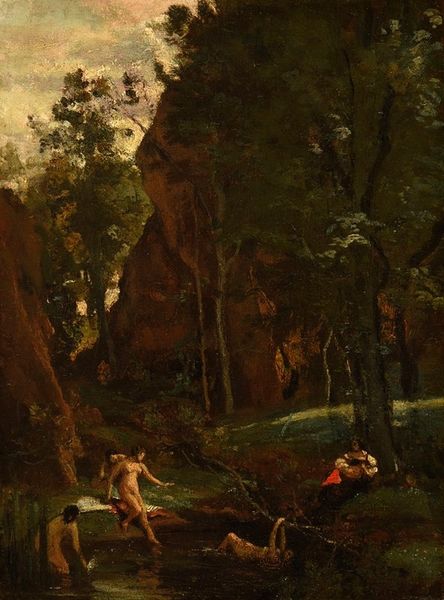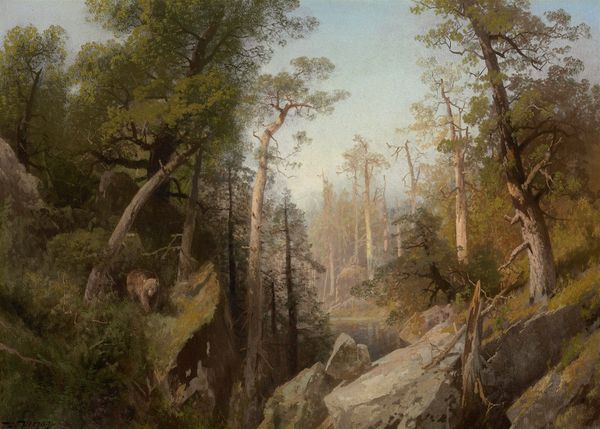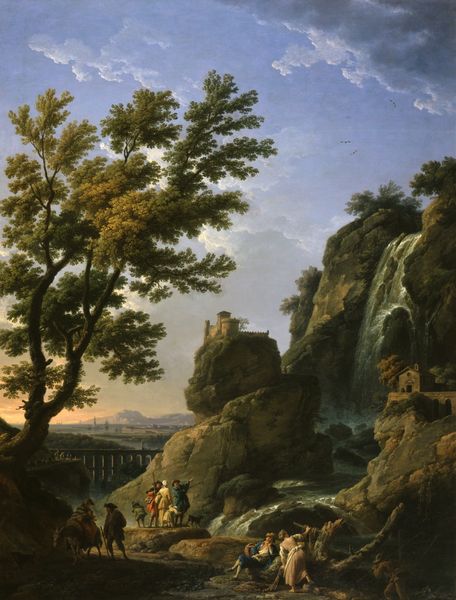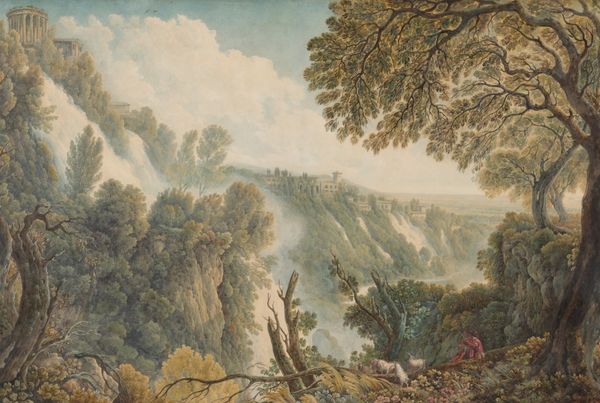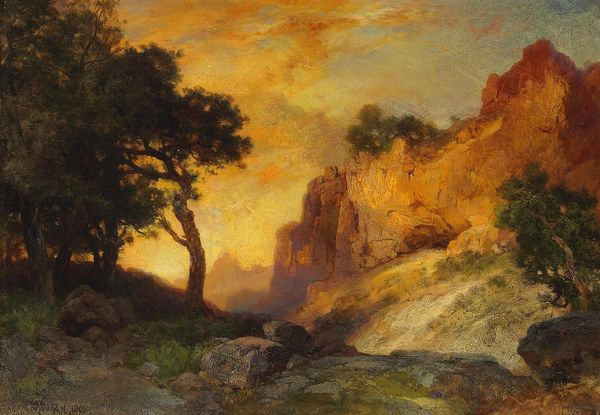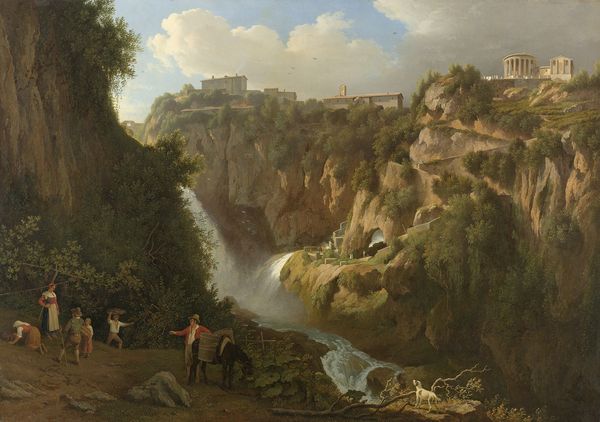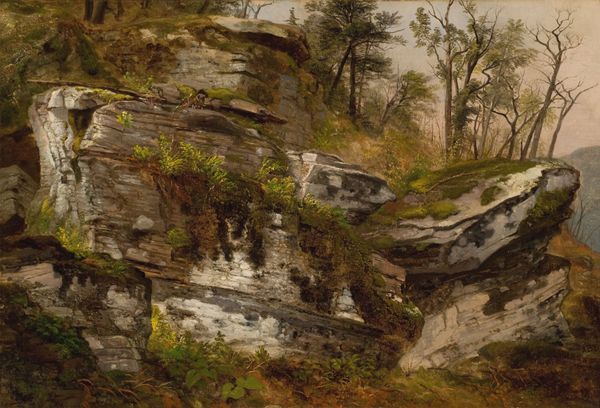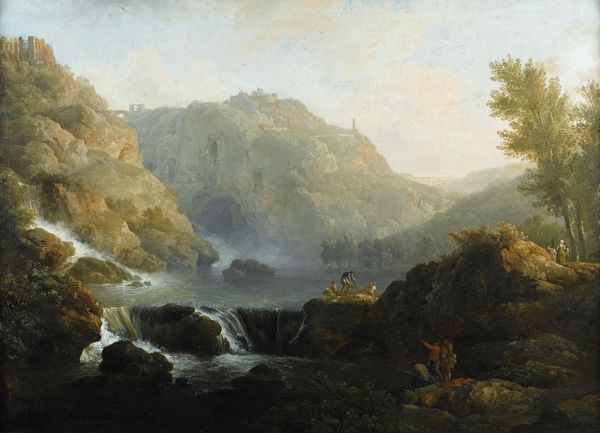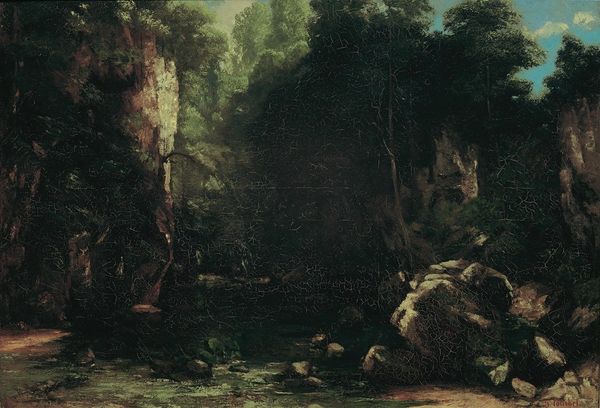
Overgrown Cliffs with a Waterfall in Italy (Tivoli)
0:00
0:00
hendrikvoogd
Rijksmuseum, Amsterdam, Netherlands
painting, oil-paint
#
painting
#
oil-paint
#
landscape
#
oil painting
#
underpainting
#
watercolor
#
realism
Copyright: Public domain
Editor: Here we have Hendrik Voogd’s "Overgrown Cliffs with a Waterfall in Italy (Tivoli)," an oil painting located in the Rijksmuseum. There's something about the contrast between the rugged rocks and the soft, almost feathery, foliage that’s really captivating. How do you interpret this work, considering its time and place? Curator: The work evokes the complex relationship between the ideal and the real that defines landscape painting of this era. What you see here is not just a record of a specific locale, but an idealized construction reflecting prevailing social and political ideologies. Think about the concept of the picturesque; were landscapes truly untouched, or had they been actively manipulated by landowners, reflecting wealth and control? Editor: That's a really interesting point. I hadn't considered how landscape paintings could also be political statements. So, you're saying Voogd's image, beautiful as it is, might be communicating more than just natural beauty? Curator: Precisely! This scene offers a space to reflect on the ownership and control of land, and who gets to enjoy it. Think about who commissions and consumes landscape art versus who might live in, work on, or be displaced by such landscapes. The apparent naturalism belies layers of power and privilege. Do you see how the waterfall might symbolize both the sublime power of nature and the potential for harnessing it? Editor: That gives me a lot to think about! I had initially seen the painting as simply beautiful. Now I realize I was missing all the complex layers of social commentary woven into it. Curator: And understanding those layers is essential. Recognizing art as a reflection of power dynamics can shift our whole understanding, even our experience of the artwork.
Comments
No comments
Be the first to comment and join the conversation on the ultimate creative platform.
